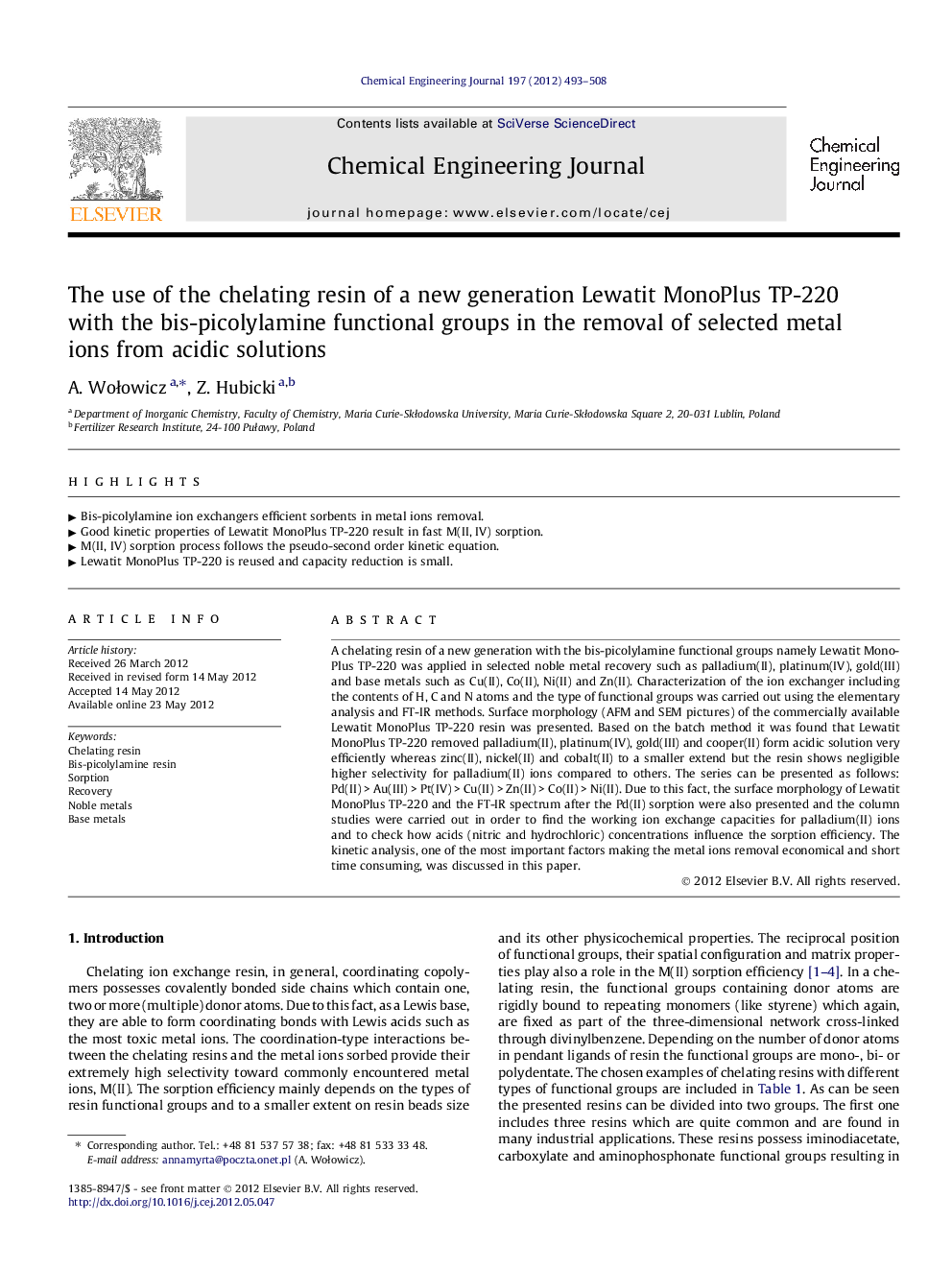| Article ID | Journal | Published Year | Pages | File Type |
|---|---|---|---|---|
| 149718 | Chemical Engineering Journal | 2012 | 16 Pages |
A chelating resin of a new generation with the bis-picolylamine functional groups namely Lewatit MonoPlus TP-220 was applied in selected noble metal recovery such as palladium(II), platinum(IV), gold(III) and base metals such as Cu(II), Co(II), Ni(II) and Zn(II). Characterization of the ion exchanger including the contents of H, C and N atoms and the type of functional groups was carried out using the elementary analysis and FT-IR methods. Surface morphology (AFM and SEM pictures) of the commercially available Lewatit MonoPlus TP-220 resin was presented. Based on the batch method it was found that Lewatit MonoPlus TP-220 removed palladium(II), platinum(IV), gold(III) and cooper(II) form acidic solution very efficiently whereas zinc(II), nickel(II) and cobalt(II) to a smaller extend but the resin shows negligible higher selectivity for palladium(II) ions compared to others. The series can be presented as follows: Pd(II) > Au(III) > Pt(IV) > Cu(II) > Zn(II) > Co(II) > Ni(II). Due to this fact, the surface morphology of Lewatit MonoPlus TP-220 and the FT-IR spectrum after the Pd(II) sorption were also presented and the column studies were carried out in order to find the working ion exchange capacities for palladium(II) ions and to check how acids (nitric and hydrochloric) concentrations influence the sorption efficiency. The kinetic analysis, one of the most important factors making the metal ions removal economical and short time consuming, was discussed in this paper.
► Bis-picolylamine ion exchangers efficient sorbents in metal ions removal. ► Good kinetic properties of Lewatit MonoPlus TP-220 result in fast M(II, IV) sorption. ► M(II, IV) sorption process follows the pseudo-second order kinetic equation. ► Lewatit MonoPlus TP-220 is reused and capacity reduction is small.
